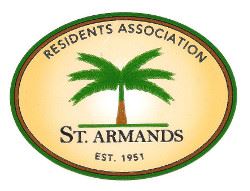| St. Armands Residents Association |
- Home
- About
- History of St. Armands
- Historical Overview
Historical Overview(a snapshot of the last 150 or so years) |
Visitors to St. Armands Circle today find a wide variety of shops, restaurants and beautiful homes. But, before the 1920's, St. Armands was a tropical island only accessible by boat. St. Armands' first homesteader, Charles A. St. Amand, came to the key in the late 1880's to fish and grow vegetables. In 1893, St. Amand filed a government claim for 131 acres encompassing a three island tract and was granted a homestead deed. He cleared one acre of land, built a small shack and claimed his land for a $13.00 fee. He sold the land in 1894 for $1,500 to Augus McInnes. Between 1895 and 1917, the land was sold several times. During that time an "R" was added to St. Amand's name by mistake. E. M. Abogast sold the key to the man who would lay the groundwork for St. Armands, John Ringling (1866-1936). John Ringling's vision for St. Armands Key was as a people-friendly place of broad boulevards, beautiful homes, classical statues, lush landscaping, elegant shops and restaurants, and a central park for musical performances. His travels to the Renaissance cities of Italy inspired his vision. John Ringling started work on his multi-million dollar development of St. Armands and Lido in late 1923 and continued through 1925. Owen Burns Construction Company laid out the street, sidewalks and landscaping. three large dredges moved millions of cubic yards of fill to build up the mangrove islands and make solid land. Ringling bought Italian statuary to place along the boulevards, and thousands of coconut palms and Australian pines were planted. Sewer and water mains were installed, roads were surfaced and canals were dredged. When Ringling Estates went on sale, Burns Realty Company was the sole agent for the property. To connect Lido and St. Armands with the mainland, Ringling and Burns began construction of a causeway on January 1, 1925. It was completed one year later. On the day the causeway was formally opened, February 7, 1926, Ringling Estates was also opened to the public. After the land boom ended, work stopped on St. Armands. The bridge was closed for a short while due to rotting planks. The dredges rusted on Otter Key and trees and weeds started to take over paved roads. St. Armands went into a period of hibernation between 1928 and 1953. After 1953, businesses began slowly returning and with the development of Bird Key and Longboat Key in the late 1950's and early 1960's St. Armands began to spring to life. Today the Circle represents the vision John Ringling had over 75 years ago. The Harding (St. Armands) Circle Historic District received registration on the National Register of Historic Places on January 16, 2001. It encompasses the Harding Circle Park, adjacent medians along John Ringling Blvd. and the Boulevard of the Presidents, and associated Ringling-era statuary. 16 Ringling-era statues are located on medians of the Historic District. They are of stone or bronze, are approximately full size, and represent classical or Renaissance themes. 21 new statues added in 2007, selected to be consistent to the Ringling-era statues and are marble, hand carved, and represent classical themes. More information on the statues can be found here. John Ringling foresaw Sarasota as a metropolitan city distinguished by its cultural facilities. Having built Cà d’Zan (1925) and the John and Mabel Ringling Museum of Art (1927) on his 66-acre estate on Sarasota Bay, events were set in motion that would fulfill Ringling’s vision. This complex, now affiliated with the Florida State University, also boasts theaters, a circus museum, and research facilities. Over time, the Sarasota Concert Band (successor to the Czecho-Slovakian National Band brought to Sarasota by Ringling in 1925), Ringling College of Art and Design (co-founded by Ringling in 1931), Florida West Coast Symphony (1949), Mote Marine Laboratory (1955), New College (1960), Van Wezel Performing Arts Hall (1968), Selby Gardens (1975), and others too numerous to mention were added, fulfilling Ringling’s observation: “Though Life is Short, Art is Long”. |
January 30, 2025 | Observer article: Take a trip back to Longboat Key's humble beginnings |
November 3, 2025 | Sarasota Magazine article: John Ringling’s Vision of St. Armands Circle Lives on Today |
